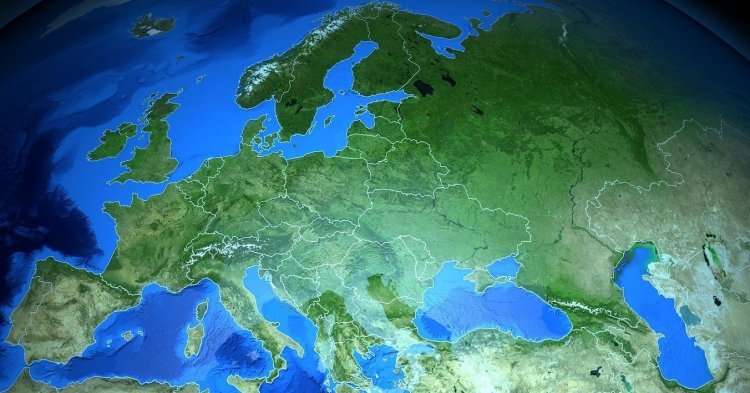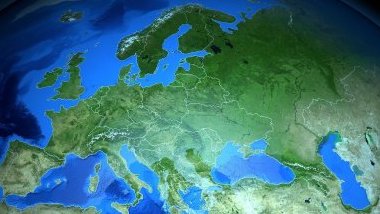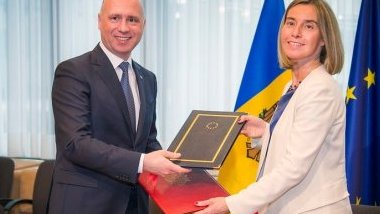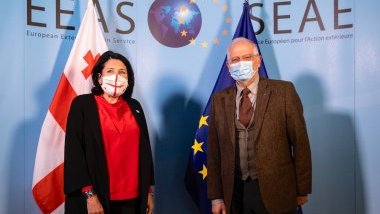This opinion on that significant political project, which probably would not have been launched without Poland’s involvement, was formulated shortly after Association Agreements between the EU and Ukraine, Moldova, and Georgia came into force. However, looking at recent developments beyond Poland’s Eastern border, it is hard to resist the impression that this initiative, aimed at bringing East European countries, the Caucasus, and the EU closer, has not been entirely successful.
Armenia left to suffer alone again
In 2020, an open armed conflict re-emerged between Azerbaijan (mainly backed by Turkey) and Armenia (predominantly supported by Russia) in Nagorno-Karabakh. The conflict has claimed thousands of lives on both sides and forced tens of thousands of Armenians and Azerbaijanis to migrate. On 10 December, a month after the Azeri-Armenian ceasefire was signed in Moscow, Turkish President Recep Tayyip Erdogan hosted a military parade in Baku to celebrate Azerbaijan’s new territorial gains. Besides calling for a change of government in Yerevan, he also announced that the conflict launched in the region would “continue on many fronts." The situation in the Caucasus, therefore, remains unpredictable, and it is not known for how long the current fragile truce will be respected.
Belarus awakening from its lethargy
Earlier, as a result of another sham presidential election in Belarus where President Alexander Lukashenko declared victory, the inhabitants of Minsk, Grodno, Brest, and many other Belarusian cities launched mass protests in the streets. In the ongoing demonstrations, which have often been bloody, protesters have demanded that the current dictator recognise Sviatlana Tsikhanouskaya’s victory as the true results of the elections. The activities of the relentless and unprecedented opposition movement in Belarus are being closely watched by foreign observers, and in recent weeks, they have been recognised by the European Parliament within the framework of this year’s Sakharov Prize for Freedom of Thought.
A historic breakthrough in Chișinău?
A recent political breakthrough has also occurred in Moldova, which has gone under the radar of foreign media. As a result of the presidential elections in November, Maia Sandu will soon be sworn in as the new president of the country. The former prime minister and long-time parliamentarian holds pro-European views in contrast to her rival, the outgoing president Igor Dodon. The latter is associated with the Socialist Party, which dominates Chișinău’s Parliament and whose political activity has brought Moldova closer to Russia—the country which has been invariably controlling the rebellious Transnistrian region through its military presence.
However, today, a clear pro-Western turn can be observed within Moldova. It is also accompanied by a strong will to escape the Russian sphere of influence and put an end to state corruption and socio-economic inequalities which characterise this European state. Therefore, Moldovan citizens, encouraged by the President-elect to protest in the streets, have demanded snap parliamentary elections. The elections could possibly change the political course of Chișinău, as was the case a few years ago with Euromaidan in Kyiv, which went on to influence Ukraine’s perspective on Europe.
Ukraine’s winding, bumpy road to the West
The biggest state of the Eastern Partnership, and the only one in the region regarded as a potential candidate to join the EU in the near future, Ukraine, for yet another year, is facing major challenges on its way to join the West. Apart from the never-ending war in Donbas, which none of 29 truces has managed to stop, the country continues to suffer from extensive corruption, one of the main motives that led to the Maidan revolution.
To make matters worse, at the end of October, the Kyiv Constitutional Court issued a ruling that made it practically impossible for state authorities to act against corruption from sanctioning non-compliance with applicable laws. Anticorruption investigation had been initiated against four of eighteen Ukrainian constitutional judges—the very same people who were responsible for this controversial ruling. This ruling led to a strong reaction by President Volodymyr Zelensky, who called on the Parliament to dismiss all the judges of the Constitutional Court. Eventually, it led to a constitutional crisis that continues till this day.
What’s next for Poland’s Eastern policy?
Although we are talking about the internal affairs of these countries, it is worth considering whether the European Union is following the dynamic events beyond its eastern borders closely and whether it should react more openly to them. Poland, in particular, could play a larger role in promoting the Eastern Partnership, an initiative which has just celebrated its 10th anniversary. After all, this program, an integral part of the European Neighbourhood Policy, was initiated by Polish and Swedish diplomacy.
Although some of its goals have been successfully achieved in recent years—citizens of Ukraine, Moldova and Georgia travel to the EU today without visas, and goods from these countries have free access to the EU’s Single Market—the current restraint by the Eastern Partnership’s EU partners should raise concern. The Eastern Partnership countries, as observed in the Ukrainian, Moldovan, Georgian, and recently in the Belarussian example, express their willingness to establish closer ties with the West despite economic and political difficulties. Once again, Polish foreign policy’s role could be crucial for the future of the EU’s foreign relations in the East.
But how does this policy look in the eyes of the citizens of the Eastern Partnership countries? I asked the young people from the Eastern European and Caucasian countries about it. Their opinions on the current state of affairs of their respective countries with the European Union, as well as their perspective on future developments, will soon be published by Kurier Europejski, and a translated version will be available on The New Federalist.






Follow the comments: |
|
